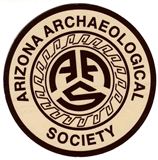

Historic Sites -- An Introduction
This section is for discussion pertaining to restoration, stabilization, preservation, reconstruction at historic sites.The primary materials used in historic structures prior to 1900 were adobe, lime, stone, and wood. Cement was not produced commercially until about 1900. Many historic structures had walls of adobe bricks that were plastered with lime.
Adobe is the most widely available building material used by man. Many historic structures are constructed using adobe bricks. Earth, used as sun dried bricks, and other forms as mentioned in the prehistoric section of this web page, is the world's oldest building material. The first earth buildings were constructed more than 9000 years ago. The biggest preservation concern with using adobe is exposure to water in the form of direct rainfall, flooding, and rising damp, which is the absorption of subsurface moisture by capillary action. Windblown sand is another major concern along with the other agents of deterioration.
The biggest concern of preservationists was the erosion of the mud walls from direct rain. Over the past two or three decades, various materials have been experimented with and used to "water proof" this type of structure. It seems that for every advantage provided by these materials, there is at least one disadvantage. For example, many adobe brick structures were coated with various types of plasters or some type of waterproofing spray. Lime plaster was used prior to cement which became available for use around 1900. This protective treatment seems to do what it was intended to do for a while. However, it fails to take into consideration that a mud structure is a "living, breathing" thing. These protective coatings stop the negative impact of direct rainfall but do not let the wall fabric breath. It traps rising damp moisture within the coated wall surfaces. As the moisture accumulates in the adobe fabric, the brick and mortar begin to weaken, and, if enough moisture is present, return to its soft plastic state and result in wall collapse.
HISTORIC PROJECTS:
- SWANSEA
- Kentucky Camp -- In process